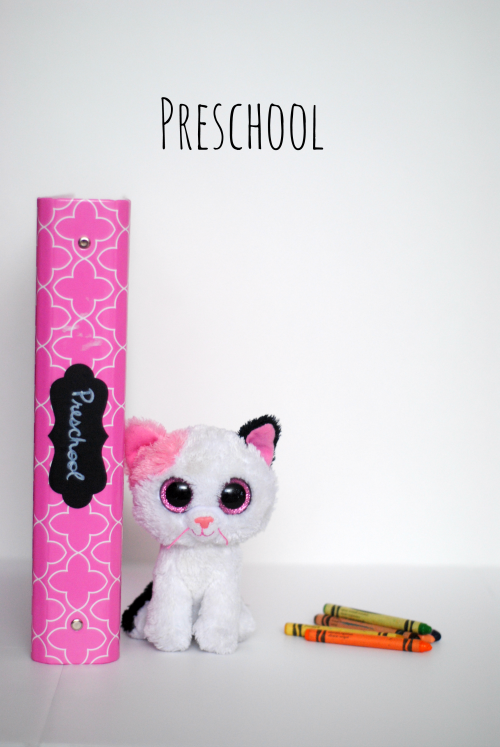It's time for my favourite part of simplifying: purging!!!!! To me, this part is therapeutic. It is so much easier to concentrate when the room isn't cluttered. Our days go more smoothly when we aren't drowning in toys.
Homeschooling often comes with a lot of stuff. Math manipulatives, books, art projects, science experiments. It's easy to let it get over run. But in order to really simplify our homeschool, we need to get control over the things.
It's time to tackle the bookshelves and tame the art cupboard. Clean out the desk drawers and organize the closets. It's time to get rid of all that stuff you've been trying to work around this year.
There are three major areas that I think most homeschoolers will need to tackle: projects, books and arts and craft supplies.
Projects
You know all of those pictures and paintings the kids made that you don't want to throw out? So instead they're just filling up drawers or cluttering up desks? It's time to go through them. Let's be realistic here. You can't keep every little thing that your kids make. You need to find a system for deciding what you're going to keep and what will go. Then you need to find a way to store the things you are keeping.
I have a magazine box for art projects. At the end of every month, I choose one art project or drawing per month per child and I file them away in their binder for the year. If they make a particularly large project or something that doesn't go in a binder (like a salt dough map of Africa, for example), I take a picture of the kids holding it and that goes in their binder instead. Now I've got an organized binder that shows the highlights of their work for the year. The nice thing about keeping one for each month is that you can really see how their skills progress throughout the year. And the kids love looking through their binders. They don't miss the stuff that's gone. Trust me!
Books
I love books and I do not mind having a bunch of them. We love to read and I like having a big bookshelf full of books to choose from. I do not, however, love having to pick up all 1100 books everytime the toddler decides to clean them off the shelf. Finding a way to organize your books will make life a lot easier. If you've got a lot of books, maybe it would be helpful to clean up and clean out. Your days will be a lot simpler if you're not having to dig through a giant pile every time you need to find a book.
Start by going through your books. If there are books that are really damaged, consider getting rid of them. We've got quite a few that were chewed on and coloured in. Not to mention the ones with the covers ripped off. Have I mentioned that my youngest is a lot like a tornado? Adorable but totally destructive.
I would also consider getting rid of books that you didn't enjoy or that you won't read again. There's no use taking up space.
After you've whittled down your collection to those you want to keep, find a way of sorting them. I like to separate mine by age group. Board books for babies, picture books, early readers, family read alouds and books for mom and dad.
Now put them back on the shelf. You might want to consider placement if you've got a baby or toddler in the house. I like to keep everything but board books on a higher shelf, out of reach of those sharp, paper hungry baby teeth. When we move, I would like to colour code the books with stickers on the spine so that the kids know where to put them back on the shelf (my husband rolled his eyes when I told him this...maybe my type A is showing again?). If you can get the family on board with keeping things organized, life will be even easier.
Arts and Craft Supplies
We love arts and crafts. So much so that I have developed a bit of a craft supply addiction. I love picking up new pom poms and stickers. We probably have enough water colour paints to paint an entire house. This is not a good thing. How is anyone supposed to find what they're looking for in all that stuff? Kids get so easily overwhelmed that when there are too many options, they'll often give up before they even start.
It's time to clean out the art cupboard. Throw away tiny pieces of scrap paper that somehow never make it to the garbage bin. Combine half empty bottles of paint and glue. Sort those little embellishments into containers instead of letting them roam free in the bottom of a box.
I like to sort my art supplies into labelled boxes. We've got a box for paint supplies, one for cut and paste, one for stickers and small paper supplies and one for beeswax and playdough, etc. When the kids want to do a craft, they can just grab the box they want. When they're done, everything goes back i the box and the box goes back on its shelf. It makes it easier for them to find what they need and easier for them to clean up when they're done. I even hang their aprons right next to the art cupboard so that everything they need is right there.
I really believe that we function better in a clutter free space. If you take the time to clear out the extra stuff that's kicking around your school space, I bet you'll notice a change in the tone of your days.
To read the rest of the Simplifying Your Homeschool posts, click the image below.










































